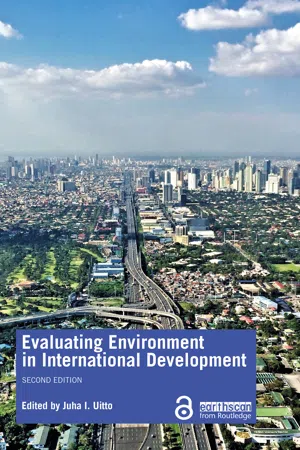Introduction
The year 2020 was defined by a pandemic that started in China sometime in late 2019. The pandemic, dubbed COVID-19, quickly spread across the world, sparing no continent and virtually no country. By mid-2020, some 8 million people around the globe had been infected. The fatality rates for the pandemic were not as dramatic as in the case of earlier zoonotic viruses, such as Ebola, which kills about half of those infected and up to 90% of the victims in some areas. SARS, the severe acute respiratory syndrome, closely related to the 2020 pandemic—COVID-19 is caused by a virus called SARS-CoV-2—also had a fatality rate of 14–15%,1 but its spread was contained and it infected less than 10,000 people. COVID-19, in contrast, had by mid-2020 killed some half a million people worldwide—about a quarter of them in the United States—due to its rapid spread.
At the face of it, the pandemic has been seen primarily as a health crisis, leading to severe economic and societal disruptions. The World Bank estimates that COVID-19 may push an additional 71–100 million people into extreme poverty.2 Most of these people will be in countries that already struggle with poverty: almost a half in South Asia and a third in Sub-Saharan Africa.
Fundamentally, however, COVID-19 is an environmental crisis. It has provided a very concrete example of how human health and ecosystem health are closely intertwined—and how human systems are dependent on natural systems.
Zoonotic viruses, like SARS-CoV-2 originate in animals and spill over to humans. The frequency of such spill-overs and subsequent epidemics has increased in the past couple of decades because of how we interact with the natural environment (Vidal 2020; Quammen 2012). It is a direct function of increased contact humans have with other animals, both wild and domesticated. COVID-19 may have started at a wet market in the city of Wuhan in China where many kinds of live animals were for sale—for food or for traditional Chinese medicine (TCM)—kept and slaughtered in crowded and unhygienic conditions. The likely origins of the virus are in bats but there may have been an intermediary host (perhaps pangolin, which is used for TCM). It is also possible that a farmer collecting bat guano for fertiliser was directly infected. Irrespective of the transmission mechanism, which we may never determine with certainty, the root causes of the pandemic—as well as those before it and those yet to come—are known. In fact, such a pandemic was widely predicted by scientists before it happened (Osterholm and Olshaker, 2020).
The root causes lie in the fact that human impact has been constantly expanding deeper into the natural world, as we make more space to accommodate and feed the increasing number of people and seek raw materials for continued economic growth. Cities and suburbs, transport networks, agriculture, logging and mining all penetrate deeper into hitherto undisturbed ecosystems thus bringing people into closer contact with new species—and their pathogens. At the same time, ecological balance is disturbed. As large predators (like wolves or big cats) are killed off, the animals that benefit are those that thrive alongside humans: rats, bats, racoons and the like. They are also the ones whose viruses are most susceptible to jump over to humans. In Africa, hunting bush meat for human nutrition includes primate species whose genome is very similar to that of humans, making spill-over all that easier.
It is obvious that in order to prevent future pandemics, we need a better way of interacting with the natural environment. This is not true only for pandemics, although it is a concrete matter that has finally caught the attention of policymakers and the wider populace as well. Healthy ecosystems and biodiversity are essential for the well-being of humankind in a myriad ways providing ecosystem services from clean air and water to climate regulation and protection against floods and storms. Yet, anthropogenic climate change caused by the burning of fossil fuels for energy and transportation, deforestation and cattle ranching, and the destruction of natural habitats pose constantly increasing threats to global sustainability. There are indications that these unsustainable developments already threaten the very drivers of these developments: wanton drive for economic growth, the continued increase in human numbers and wealth. Global excess mortality caused by air pollution has been estimated at 8.8 million people annually (Lelieveld et al. 2020).
The pandemic has also brought to the forefront drastic inequalities in societies all over the world that pose hindrances to sustainable development. An analysis of CDC (Centres for Disease Control) data in the United States found that the crude death rates from COVID-19 for Blacks was twice that for whites, and that for Hispanics/Latinos about the same as for whites. However, given that these populations have much younger age structures than whites, a huge gap emerges: the age-adjusted death rate for Black people was 3.6 times and for Hispanic/Latino people 2.5 times for whites (Ford, Reber and Reeves 2020). The factors behind these differences reflect endemic and entrenched inequalities that have left especially Black residents impoverished, with fewer jobs, and in poor health (Eldeib et al. 2020). Many minority people also work in occupations, such as services and transport, which do not allow for distance work. In Singapore, which saw a rapid rise in infections following a highly successful curtailment, 90% of the infections were among migrant workers. In Mexico, despite rapid measures taken by the government, people in the informal sector, including street vendors many of whom are women, were not able to stop working and thus suffered disproportionately from the pandemic. These examples reveal the close relationship between economic, social, environmental and political issues that determine the outcome of what on the surface is simply a health crisis.
